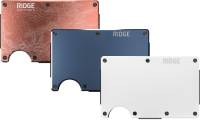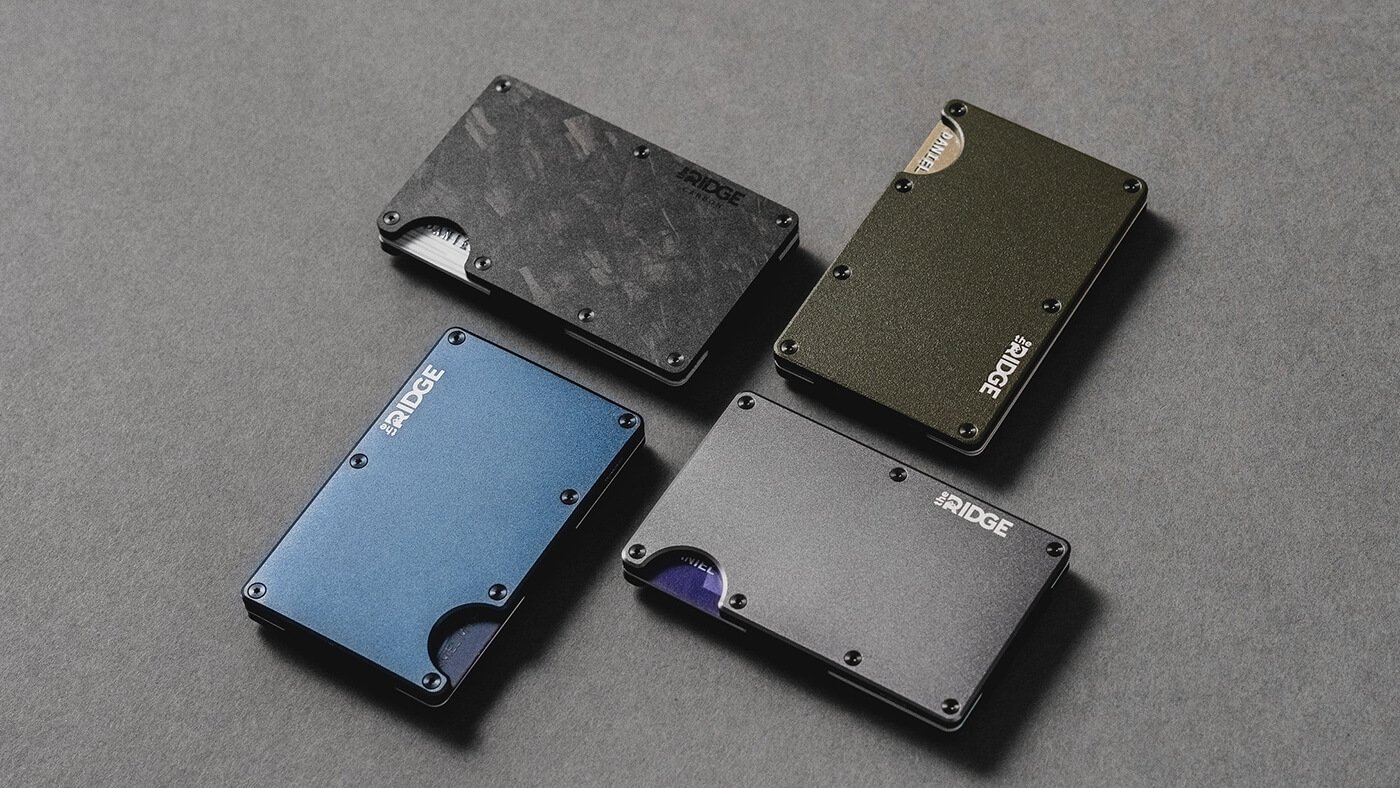When it comes to choosing the right Ridge wallet for you, one of our most popular materials is carbon fiber. Not only our strongest wallet, but also our lightest, the carbon fiber piece is arguably the pinnacle of wallet perfection, combining all the benefits of our other wallet materials, and still coming in at an affordable price.
But unlike steel, aluminum, and titanium, the term “carbon fiber” is something that not everyone is familiar with. Where does carbon fiber come from? What are its advantages? We shed some light on our favorite form of fiber:
How is it made?
Without wading too deeply into the science of it all, all you need to know is that the vast majority of carbon fibers—sometimes referred to as graphite fibers—are made from polyacrylonitrile, an organic polymer. This raw material, called the “precursor,” is stretched into long, thin, winding strands (fibers, see?), which can be thinner than a strand of human hair. The fibers are then heated to extremely high temperatures without any exposure to oxygen, thereby preventing them from burning. This process is called carbonization.
Carbon fibers are twisted together into tightly interlaced chains, sort of like knitting a blanket. Crazy, right? Pretty high tech, even if it’s not a sci-fi metal like vibranium or adamantium. But with this development process in mind, it’s easy to understand why the carbon fiber Ridge wallets have that distinctly textured, interlocking look. Now you know.
What is the history?
So wait, why doesn’t carbon fiber have the same recognition as metals like steel or titanium? As you’ve probably guessed, carbon fiber is something of a newcomer on the metal block. As Energy.gov explains, high performance carbon fibers were officially invented in Cleveland, Ohio in 1958, with the patent being filed by Roger Bacon. Even then, it wasn’t until 1963 when a British research center developed the manufacturing process that carbon fiber’s benefits as a building material really came to light.
However, if a history book were to be written about how carbon fiber came to be, the credit for the true beginnings—I.E., carbon filaments—would have to be given to English inventor Joseph W. Swan in the 1850s and 1860s, according to the Smithsonian. So in one way or another, if you like that carbon fiber wallet you’re now holding in your hand, you can thank merry old England.
What are the advantages?
The advantages of carbon fiber as a material are too numerous to list. The key thing that makes carbon fiber stand out is that it has the one-two-punch combination of being extraordinarily lightweight while also being extraordinarily strong. How strong? Well, carbon fiber is said to be five times stronger than steel, and that alone would account for its increasing popularity.
It’s also remarkably stiff, tolerates extreme temperatures, has high tensile strength, and resists corrosive chemical damages. This makes it particularly stand out in fields like aerospace, where engineers need to use metals that can withstand the Earth’s atmosphere. But hey, it also is a great material to make wallets out of, so just think of it as a rocket ship in your pocket.














